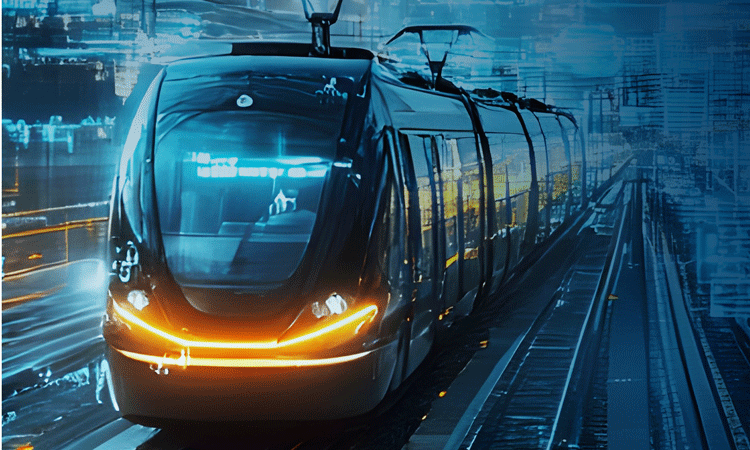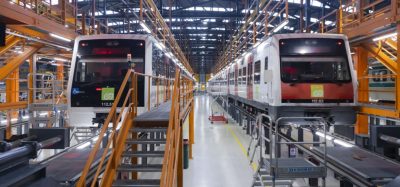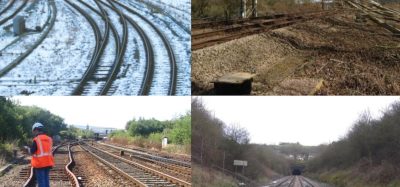Building next-generation railways: Digital transformation & cyber-security in rail
Posted: 1 July 2025 | Kevin Wood | No comments yet
As we embrace advancements behind next-generation rail systems, operators need to ensure strengthened cyber resilience to counter the evolving threat landscape. Kevin Wood, Cyber Design Authority, Thales, explains further.


Public transport is a vital part of Critical National Infrastructure (CNI). Not only key for connecting commuters and employers, transportation of goods inland, and connecting communities, it plays a vital role in wider sustainability efforts.
Rail travel is on the increase too. In the UK alone, in 2023 there were 1,385 million passenger rail journeys – a 39.9% increase on the previous year.
Alongside increased usage, the rail sector is undergoing a period of digital transformation to enhance reliability and efficiency. However, increased connectivity can only be achieved through robust safety and cyber-security. 42% of critical infrastructure organisations have suffered a data breach to date, with 93% observing an increase in attacks – highlighting the urgent need here.
Protecting legacy systems while building for a secure future is crucial. As we embrace advancements behind next-generation rail systems, operators need to ensure strengthened cyber resilience to counter the evolving threat landscape.
So, what are the advancements behind next-generation rail systems, what are the associated risks, and how can operators ensure strengthened cyber resilience to counter the evolving threat landscape?
Achieving operational efficiency
While legacy infrastructure is still widely operational, advanced technologies like IoT sensors, automation, and advanced digital systems are revolutionising how operators monitor and manage railway operations. From optimising train schedules and improving passenger flow to monitoring fleet status and foreseeing issues before they cause disruptions and delays, these real-time, critical insights allow for effective maintenance and operational planning for those on the ground. And with multiple different systems at play, new technologies are able to remotely coordinate different departments, control systems, and vehicles within fleets simultaneously.
Cyber-security from the outset
While this enhanced digitalisation delivers considerable benefits, it also makes systems more vulnerable to cyber-attacks, with more potential gateways for cyber criminals to intercept. The risks of a successful breach attempt could be considerable – even catastrophic – should bad actors manipulate, disrupt, or disable services. Beyond the data loss, halting of everyday operations, reputational damage, and regulatory fines at play, there are also threats of accidents from vehicle collisions and derailing, potentially putting lives at risk, and causing physical damage to infrastructure.
Security considerations cannot simply be an afterthought, or something retrofitted into legacy systems – it needs to be built into architecture from the outset.
The importance of operational systems being ‘secure by design’ cannot be understated. In fact, the efficacy of modern railways is only as strong as its cyber-security foundations. With this in mind it’s no surprise that cyber resilience is fast becoming a legal requirement. This means security considerations cannot simply be an afterthought, or something retrofitted into legacy systems – it needs to be built into architecture from the outset and robust enough to stand up against evolving requirements.
Prioritising data integrity and trust
With automation technologies able to handle reporting, warnings, and actions from critical systems, operators at the receiving end must be able to trust the accuracy and integrity of the output. For example, trusting data on a train’s reported position, speed, route, or faults is essential for effective track switching, train control and signalling. And should there be any suspicion or risk of compromise, services must be halted.
So, how can operators design secure, resilient solutions for effective, trusted control and management?
The solutions
Building trust through secure communications is one essential part of the solution. Online Key Management Systems (OKMS) enhance security when transferring critical information between devices, such as trackside equipment and in-cab European Train Control Systems (ETCS) equipment. These systems, already in use on various railway networks in the UK and globally, allow for the automated issuance of control keys and instructions, reducing the need for human intervention. Critically, Thales’ key management solutions deliver high security to sensitive environments and centralise key management, giving rail operators greater command over their keys while ensuring a secure data exchange.
Beyond safeguarding communications, vulnerabilities in application software must also be addressed. Implementing multiple layers of security, including encryption, segmented access controls, and multi-factor authentication, is therefore essential when securing sensitive assets against breaches and data compromise. Integrating proactive threat detection capabilities is just as important, with continuous monitoring and sophisticated detection tools able to notify operators of potential threats or unusual activities. This enables them to respond effectively and mitigate risks before they become a reality.
In action
Given Thales’ expertise in protecting critical systems for rail networks across Europe, a few months back we signed a Memorandum of Understanding with the Global Centre Of Rail Excellence, which is set to become one of Europe’s leading rail innovation centres. This partnership will see the two deliver next-generation technological innovation, focusing on testing the aging lifespan of rail infrastructure, integrating new systems and capabilities into existing architectures, and investing in the cyber resilience of infrastructure for future rail systems.
The collaboration will deliver and develop educational and training programmes, creating skills pathways for students in this digital-first landscape.
From a skills perspective, the talent and workforce behind these technologies will be just as integral to making safe and secure digital railways an operational reality. The collaboration will therefore deliver and develop educational and training programmes, creating skills pathways for students in this digital-first landscape, while ensuring that the rail sector remains at the forefront of technological advancement.
The digital transformation of railways is a double‑edged sword, offering significant improvements in operational efficiency and reliability while also introducing new cyber-security challenges. Paving the way for a safer, more efficient rail system must prioritise both innovation and security in equal measure, with cyber-security being seen as a key enabler of next-generation rail systems.


Global Railway Review Autumn/ Winter Issue 2025
Welcome to 2025’s Autumn/ Winter issue of Global Railway Review!
The dynamism of our sector has never been more apparent, driven by technological leaps, evolving societal demands, and an urgent global imperative for sustainable solutions.
>>> Read the issue in full now! <<<
Related topics
Big Data, Cyber-Security, Digitalisation, European Train Control System (ETCS), Internet of Things (IoT), Security & Crime Management, Technology & Software







